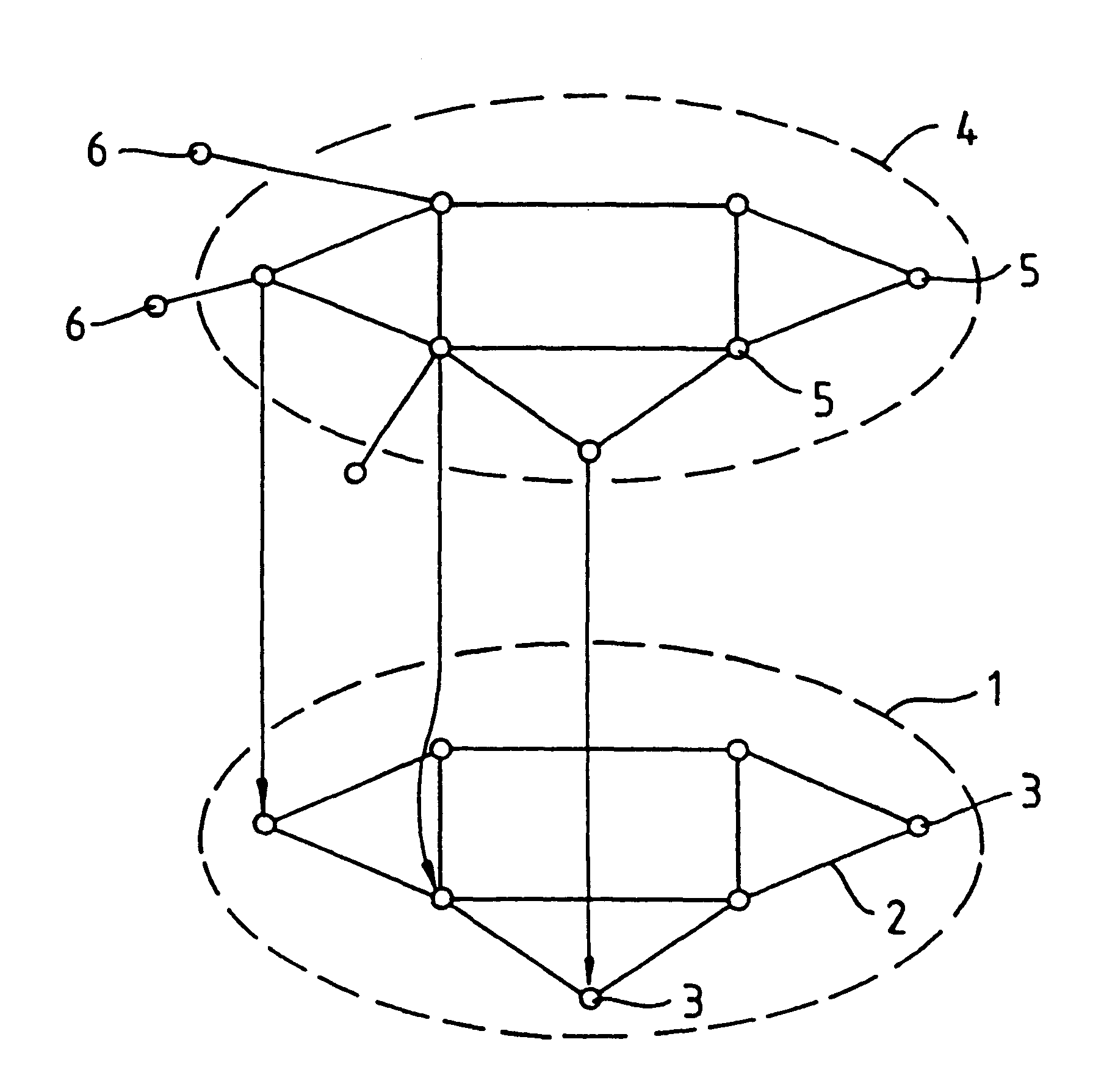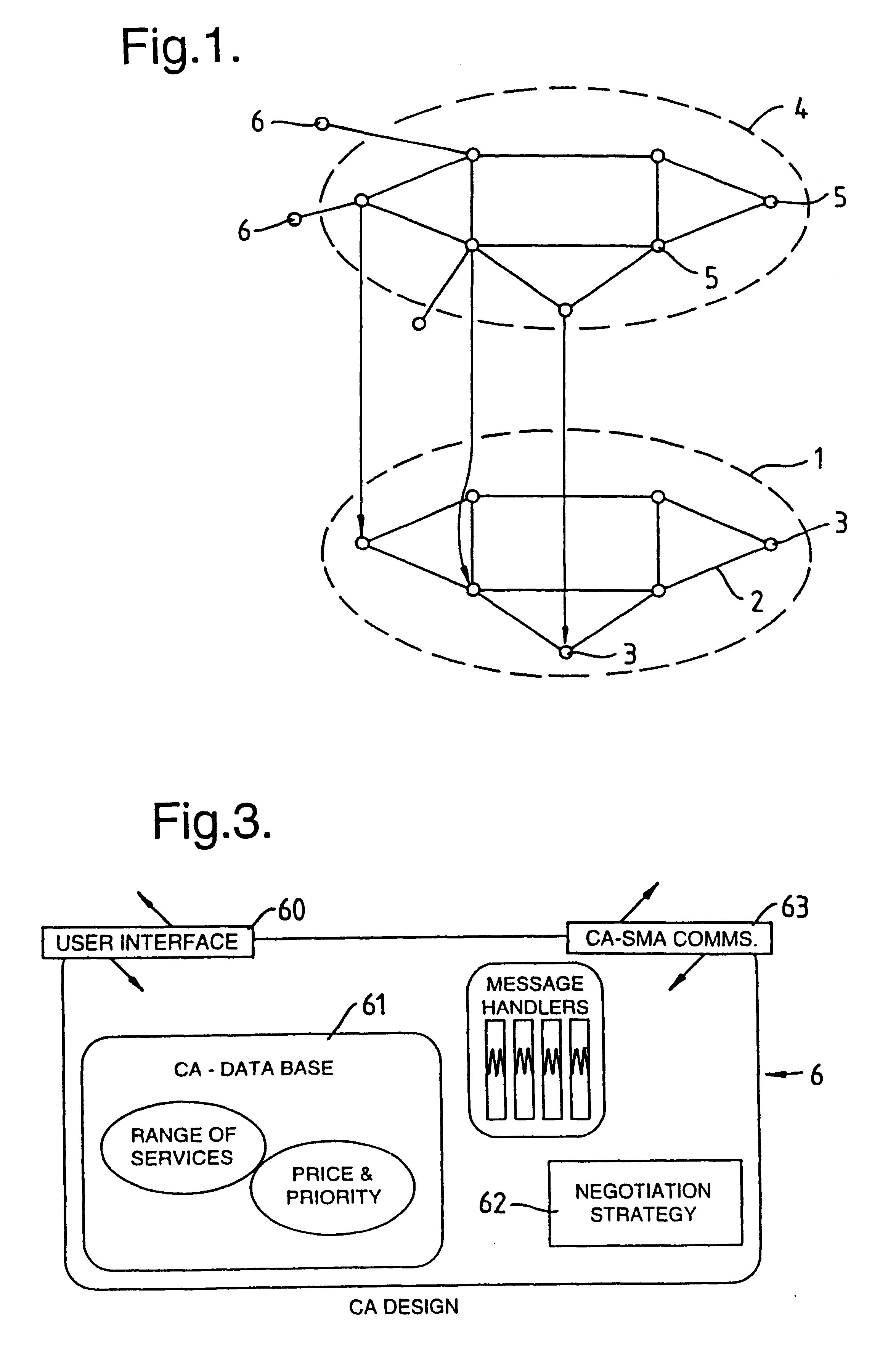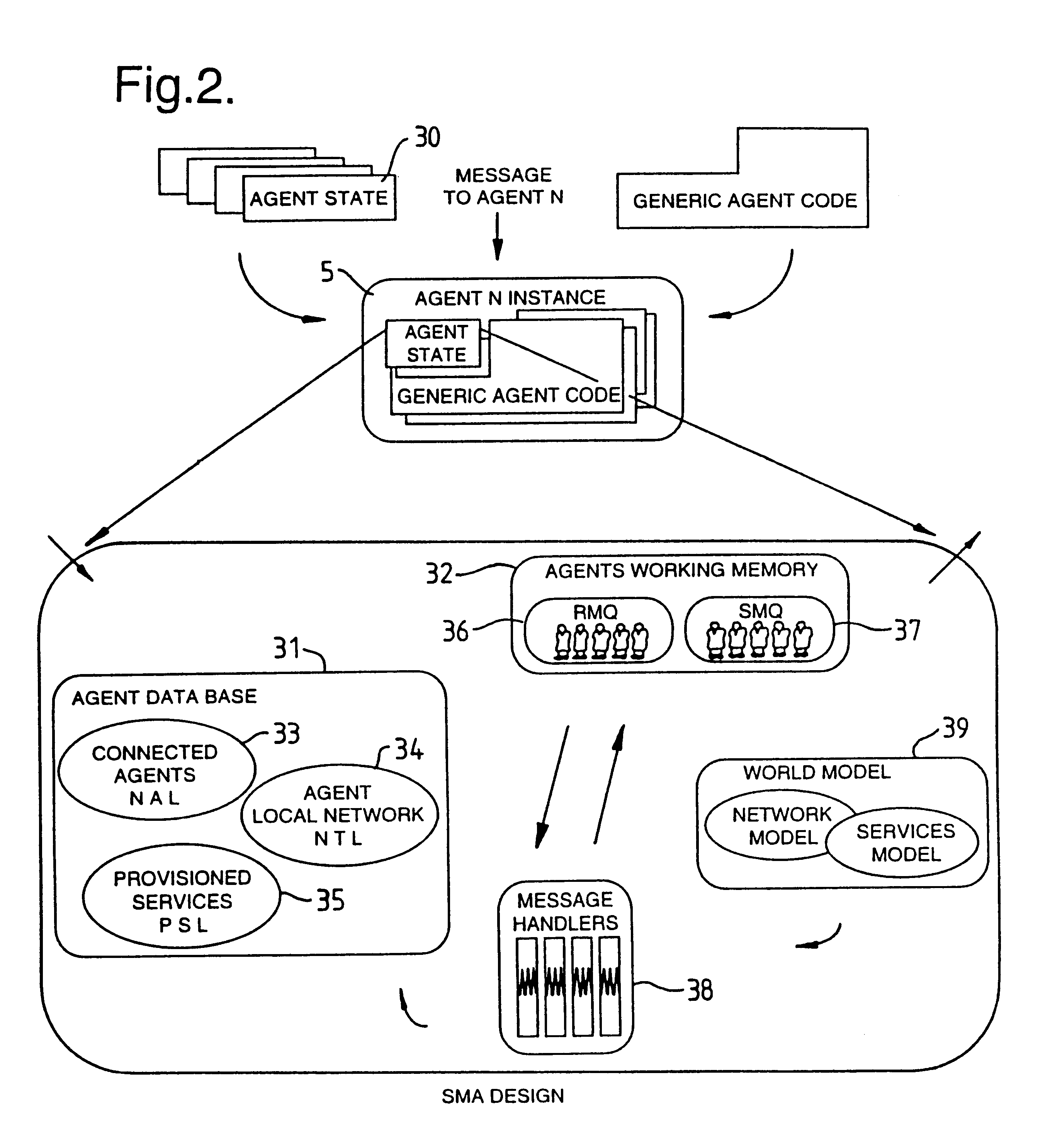Communications network management
- Summary
- Abstract
- Description
- Claims
- Application Information
AI Technical Summary
Benefits of technology
Problems solved by technology
Method used
Image
Examples
Embodiment Construction
Referring to FIG. 1, a GMSN 1 generally comprises communication links 2 between network nodes or switches 3. Communications occur, along the communication links 2 in a combination determined by the configuration at the nodes 3.
The GMSN has an associated control network 4 comprising a plurality of computer systems, or software agents, 5,6. The software agents 5,6 are of two types, these being Service Management Agents (SMAs) 5, and Customer Agents (CAs) 6. Each CA 6 is associated with a SMA 5 and acts to negotiate between a GMSN customer and a SMA 5 that might provide a service to that customer.
Software agents 5,6 can enter or leave the community they form the control network for. The main functions performed by the agents 5,6 are:
establishment and restoration of communications links 2 in the underlying GMSN 1
customer requirements satisfaction
re-establishment of GMSN control in case of agent failure.
The establishment and restoration of links 2 is carried out by the SMAs 5 whereas cus...
PUM
 Login to View More
Login to View More Abstract
Description
Claims
Application Information
 Login to View More
Login to View More - R&D
- Intellectual Property
- Life Sciences
- Materials
- Tech Scout
- Unparalleled Data Quality
- Higher Quality Content
- 60% Fewer Hallucinations
Browse by: Latest US Patents, China's latest patents, Technical Efficacy Thesaurus, Application Domain, Technology Topic, Popular Technical Reports.
© 2025 PatSnap. All rights reserved.Legal|Privacy policy|Modern Slavery Act Transparency Statement|Sitemap|About US| Contact US: help@patsnap.com



